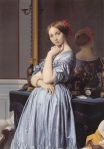It’s so humid at the moment and very difficult to sleep through the night. Yet why is it that we always seem to wake up at 4am? My Irish Times Health Plus article from 2012 explains all.
It’s not just tortured poets that are prone to nocturnal wakefulness. This well documented phenomenon frequently occurs when we’re feeling a bit low or some problem weighs heavily on our minds. This inconvenient and exhausting habit of waking up in the middle of the night, officially termed sleep maintenance insomnia, is commonly experienced during periods of stress and depression, although physiological conditions such as sleep apnoea or restless leg syndrome are also causal factors.
Many of us find it difficult to sleep soundly but what is odd is that, anecdotally at least, it would seem that sleep maintenance insomnia often strikes at precisely 4am. Just try googling “waking at 4am” to discover how prevalent a problem this is. The constancy of a phenomenon estimated by sleep experts to affect one in four of us surely can’t be coincidental. While it’s easy to accept that anxiety interferes with our sleep patterns what is less obvious is why we wake, feeling anxious and with thoughts racing, at precisely the same time every night.
This tendency is most commonly observed amongst those of us who typically fall asleep at around midnight. A decent night’s sleep should contain four to five sleep cycles, each lasting between ninety and one-hundred-and-twenty minutes. During that time we progress from a stage of light sleep through deeper sleep before entering a period of Rapid Eye Movement (REM) sleep at the end of each cycle. Whilst it’s usual to re-enter a period of lighter non-REM sleep after each phase of REM sleep, we shouldn’t reach full consciousness but should slip back under without even being aware of the change.
Problems arise when we are too tense, a state that makes our bodies more responsive during the phase of lighter sleep that tends to occur at precisely the same time every night. The slightest noise, variation in light or change in temperature is enough to jolt us fully awake and fretful. By 4am the room may be slightly warmer, weak light may be filtering through the curtains and the birds may have commenced their dawn chorus. These signals are sufficient to waken us, as the four hours of sleep we have managed by then fools our body into believing that this is sufficient to start the day. It’s not.
Clinicians previously associated early-morning waking with depression. Psychology Today has stated that, “at least 80% of depressed people experience insomnia—difficulty in falling asleep or, most often, staying asleep. Indeed, early morning awakening is a virtual giveaway of depression”. However, the increasingly stressful nature of modern life is boosting the prevalence of this phenomenon. When you consider the overwhelming burden of national and personal debt and the news of natural disasters and conflicts that are beamed into our living rooms each night, leaving us feeling powerless to resolve them, it’s little wonder that we increasingly feel down.
Research findings documenting the nature and incidence of insomnia amongst Irish adults were recently published on the website www.glotosleep.ie The authors of this study found that one third of Irish adults are currently suffering from insomnia and it’s hardly surprising that twenty-five percent of insomniacs cited work and insecurity as the main cause. One in ten specifically mentioned money worries with fourteen percent blaming current economic conditions for regular sleep disruption.
The prospect of facing into an indefinite future of waking with the proverbial lark is enough in itself to disrupt the sleep we crave. So what can we do to combat early wakefulness? Sleep experts at the National Sleep Foundation of America recommend: A quiet, relaxing bedtime routine incorporating a relaxing bath or soft music; avoiding stimulants like caffeine; getting some exercise during the day to induce physically as well as mentally exhausted; finally we should only go to bed when we actually feel sleepy.
Once we are awake our anxious state is not helped by our feeling the need to lie still and quietly in the dark with only our thoughts for company. Anxieties are amplified and any possibility of recapturing that elusive somnolence slips further and further from reach. There’s really no point in lying there indefinitely. The National Sleep Foundation suggests, “If you can’t go to sleep after 30 minutes, don’t stay in bed tossing and turning. Get up and involve yourself in a relaxing activity, such as listening to soothing music or reading, until you feel sleepy. Remember: Try to clear your mind; don’t use this time to solve your daily problems”. Mayo Clinic Sleep Specialist Timothy Morgenthaler M.D suggests hiding your clocks. He says, “clock-watching causes stress and makes it harder to fall asleep”.
On a positive note it has been theorised that insomnia is linked with creativity. Acquainted with the Night: Insomnia Poems is a collection of over eighty poems including several by Walt Whitman, Emily Bronté and Robert Frost, all inspired by the sleepless nights endured by each author. It’s also worth noting that Marcel Proust wrote much of À la recherche du temps perdu while kept awake by chronic illness. Contemporary evidence of night-time creativity can be found at www.4amproject.org a collection of photos from around the world all taken at the magical time of 4am.
PDF of original article is here – https://eafitzsimons.wordpress.com/wp-content/uploads/2013/07/the-4am-wake-up-call1.pdf






